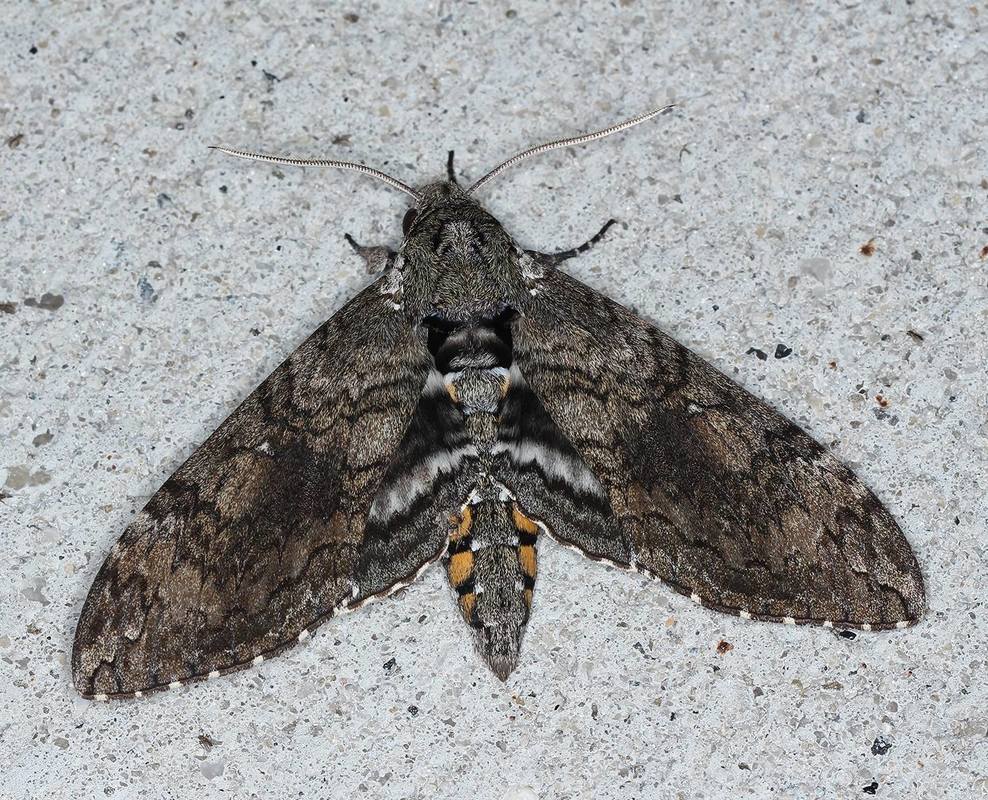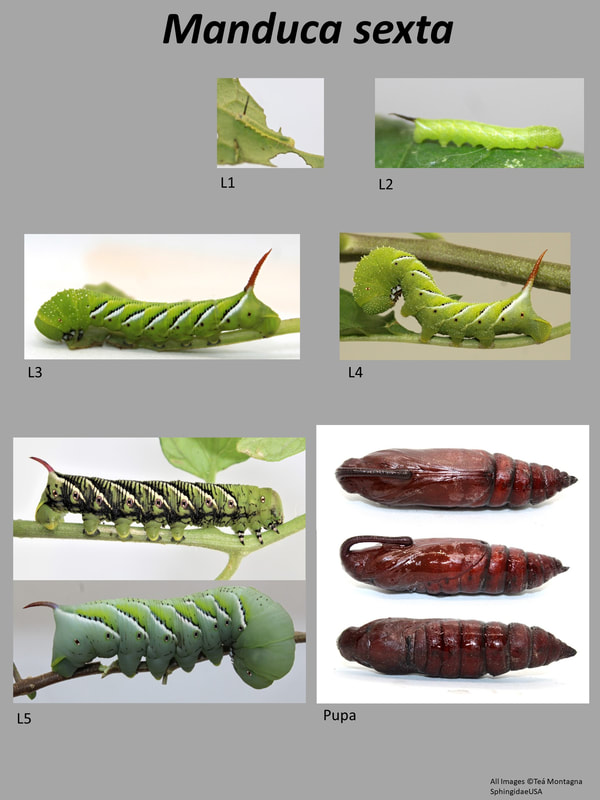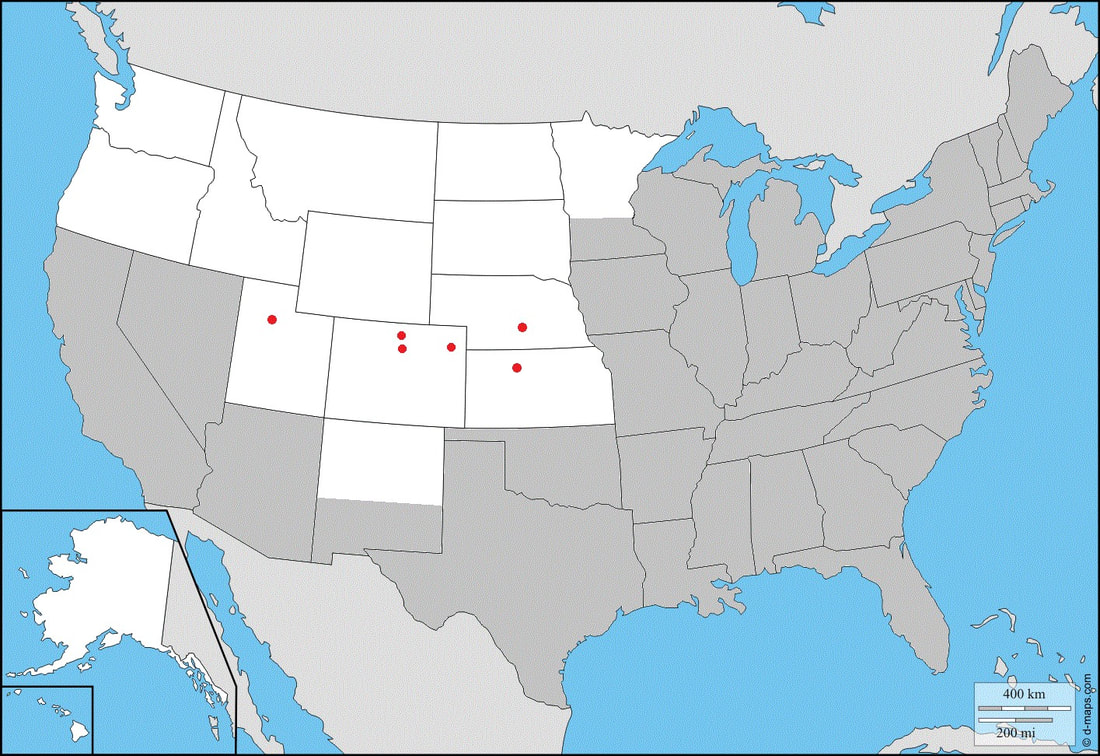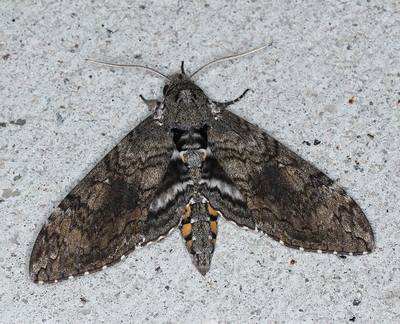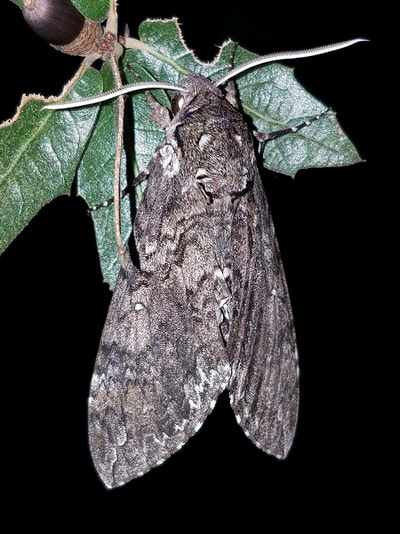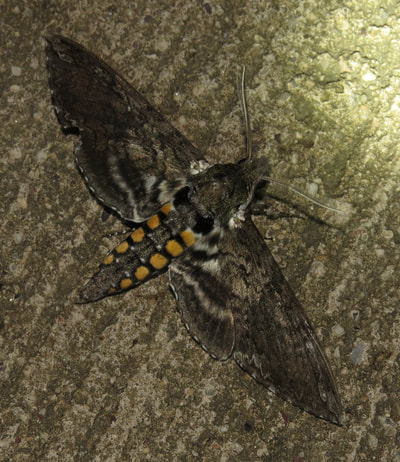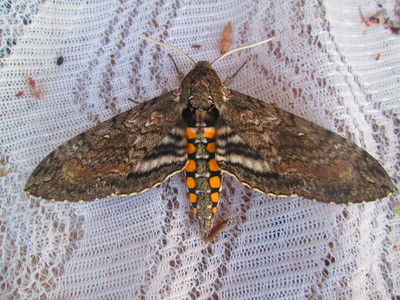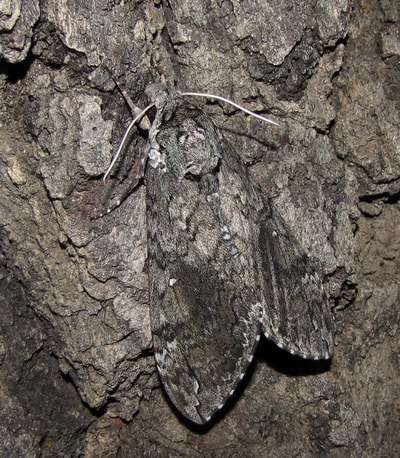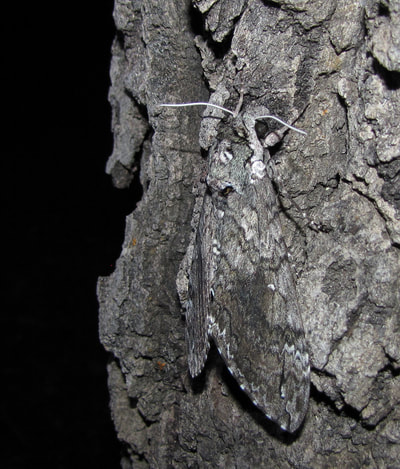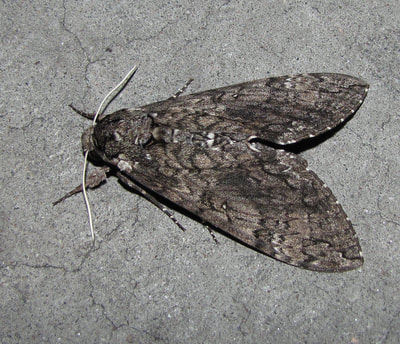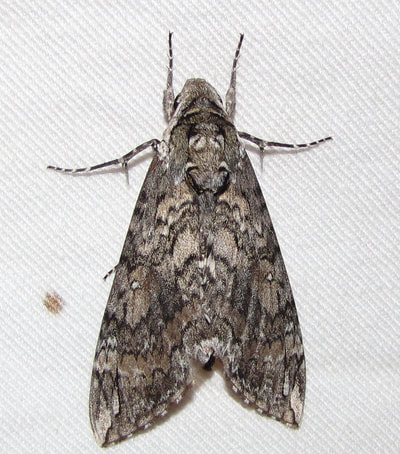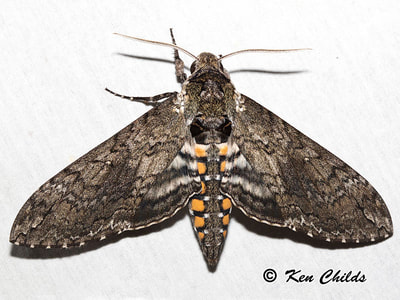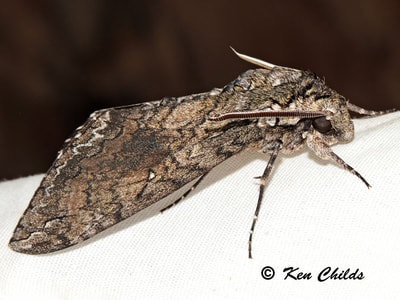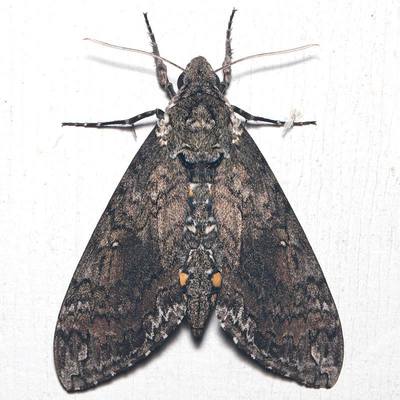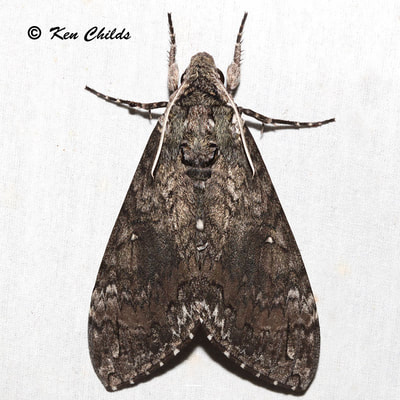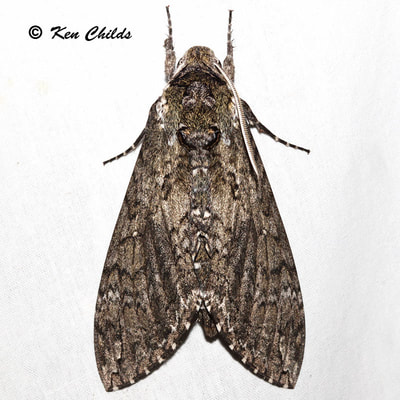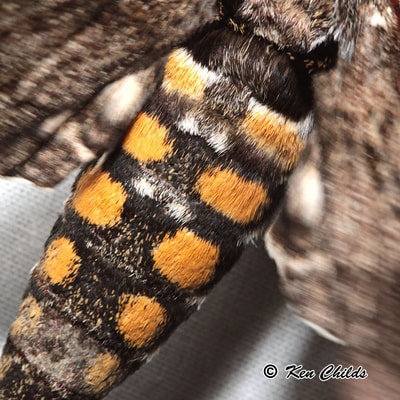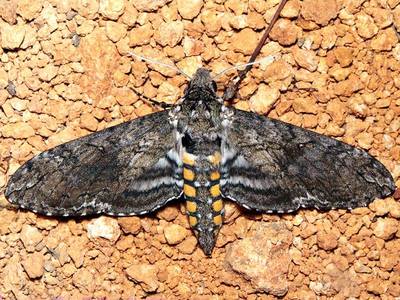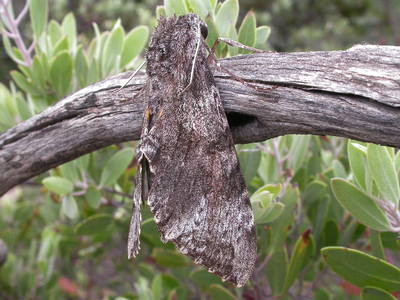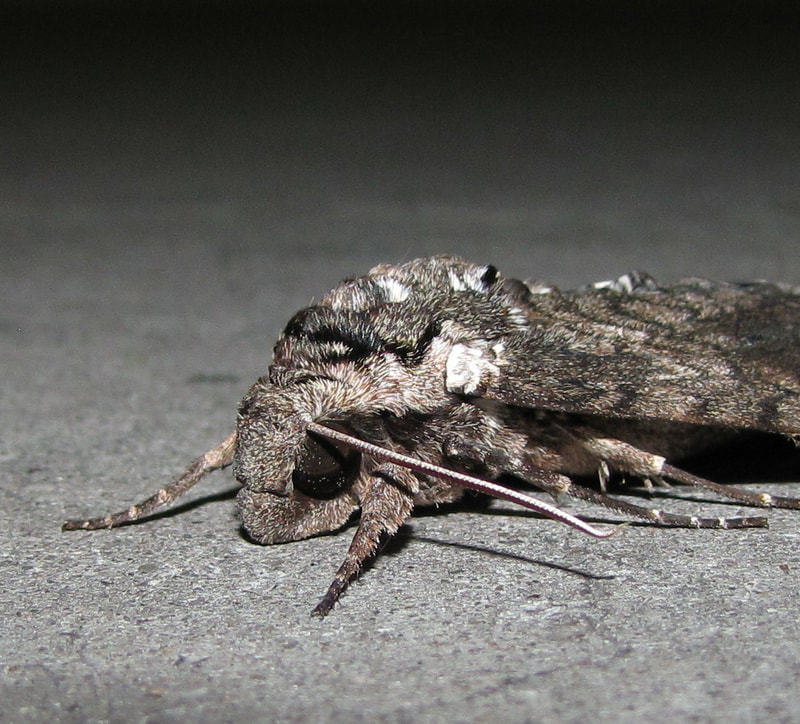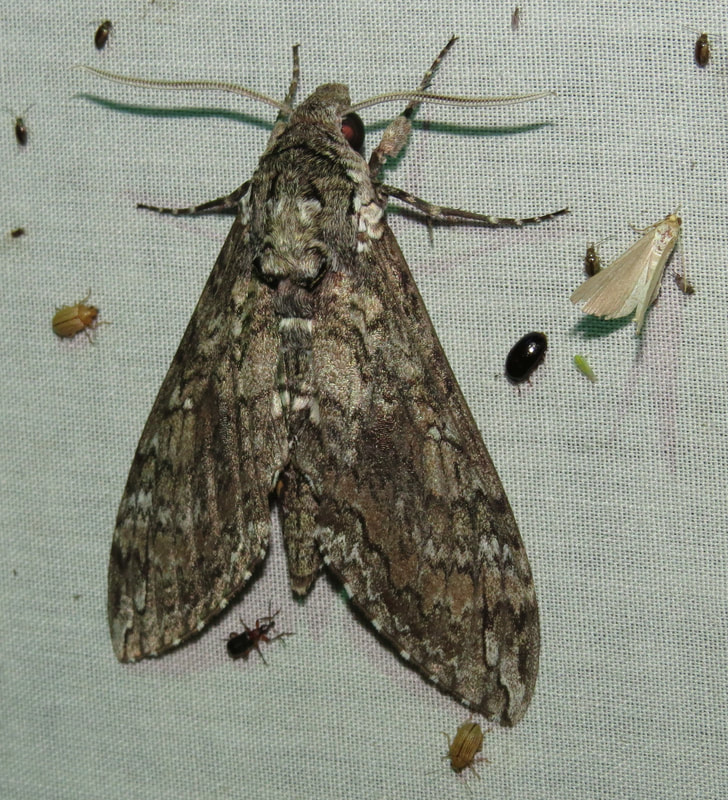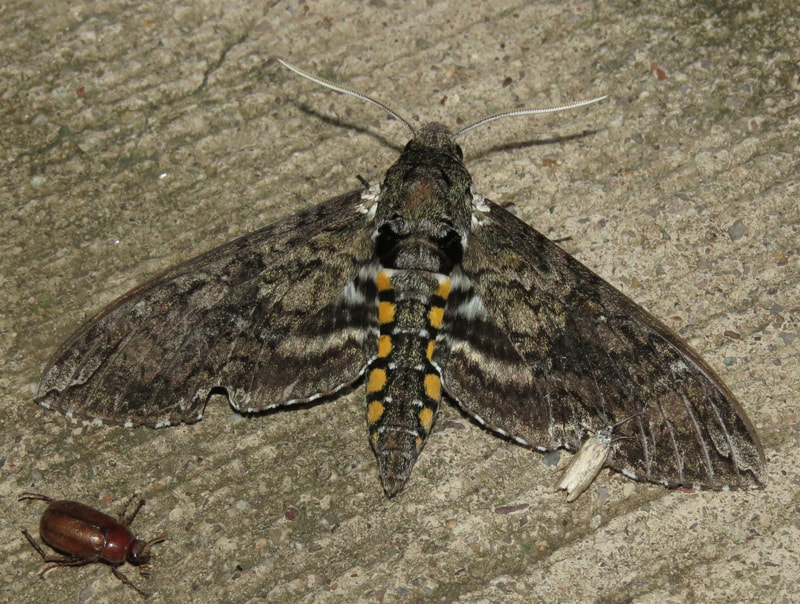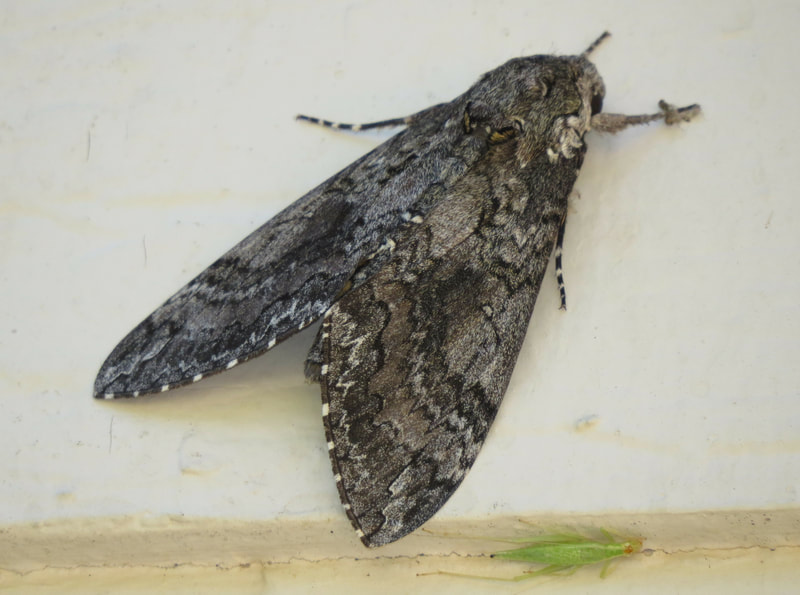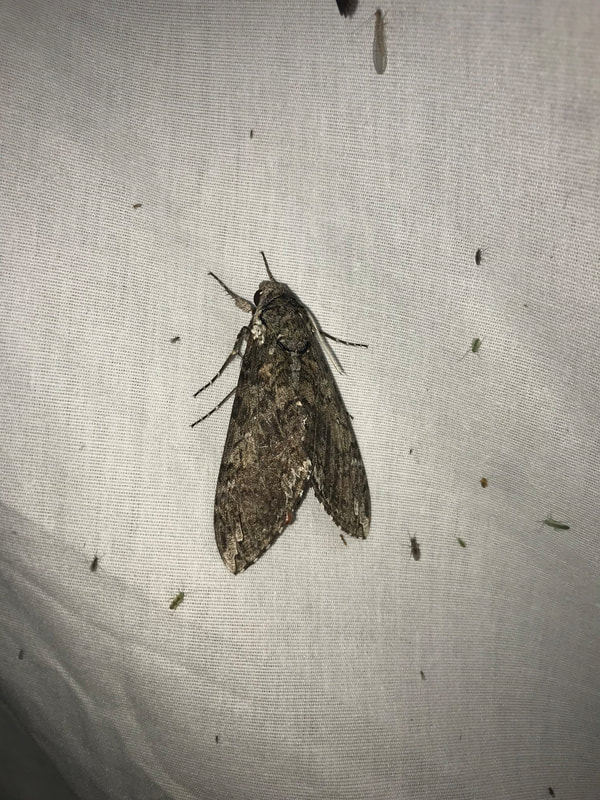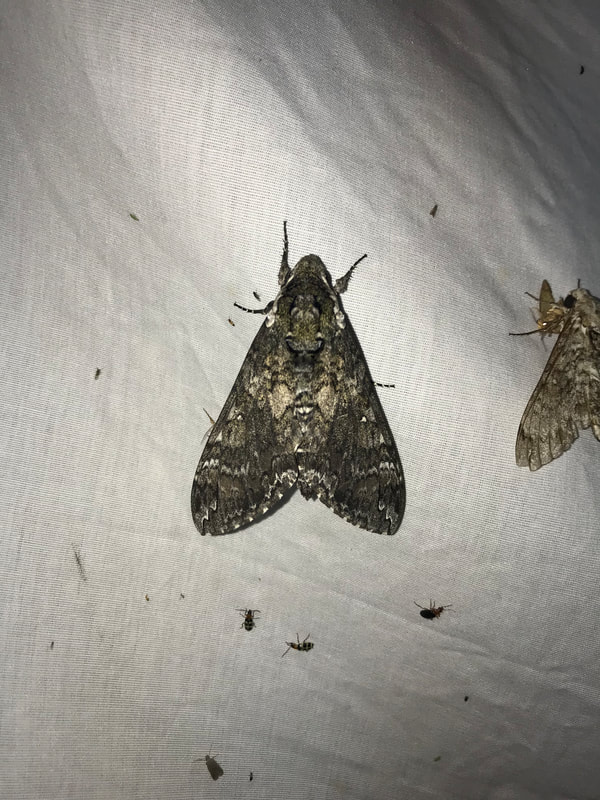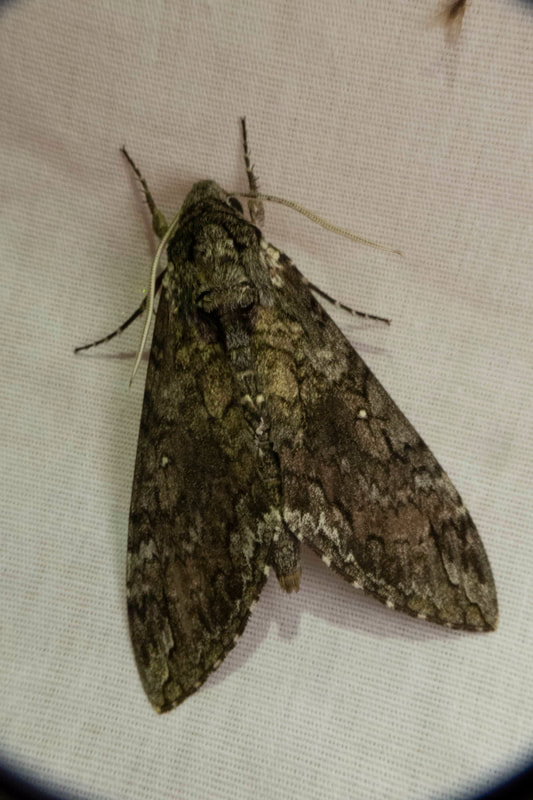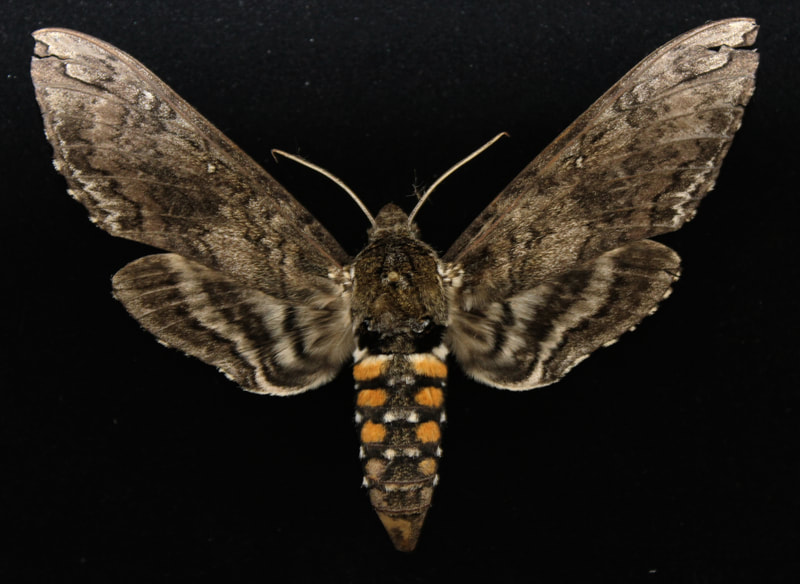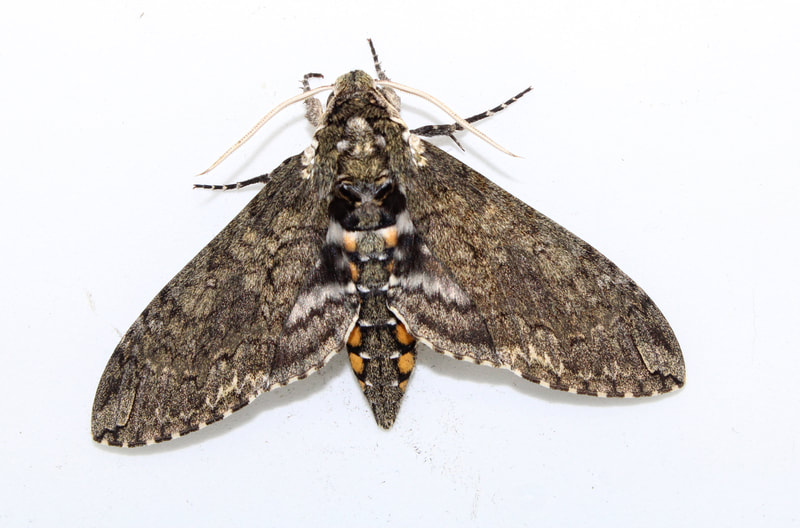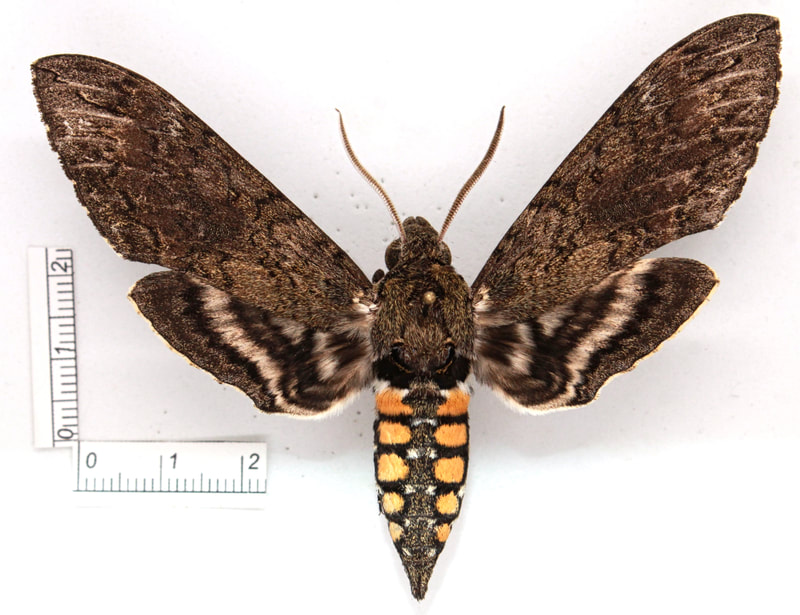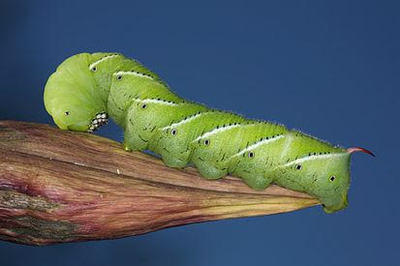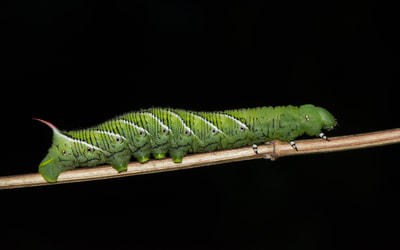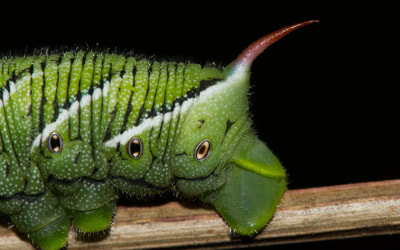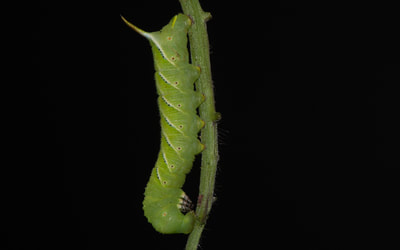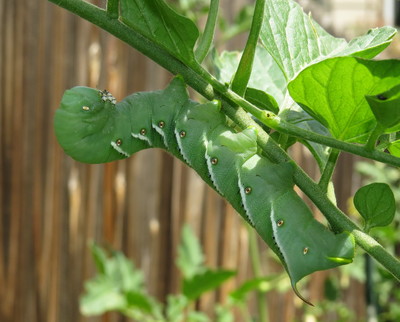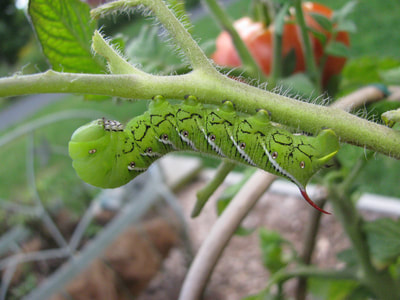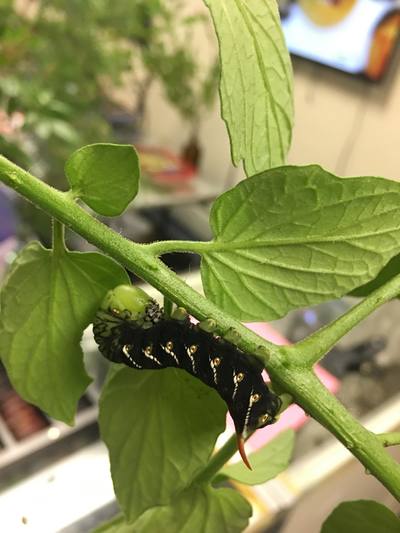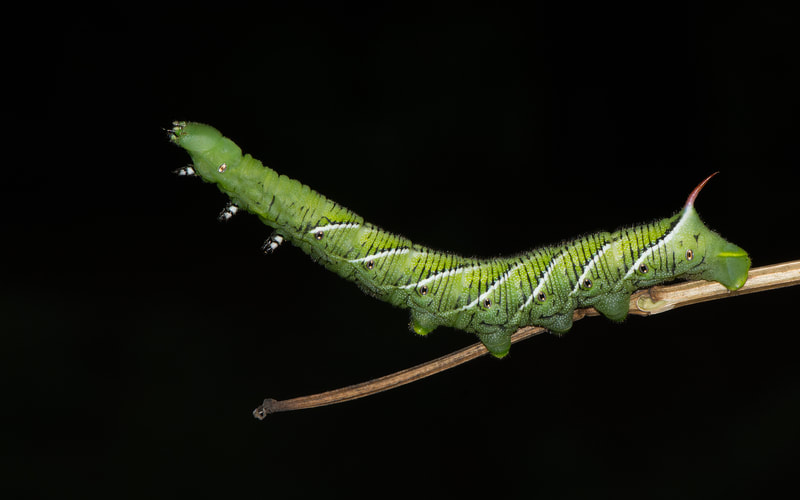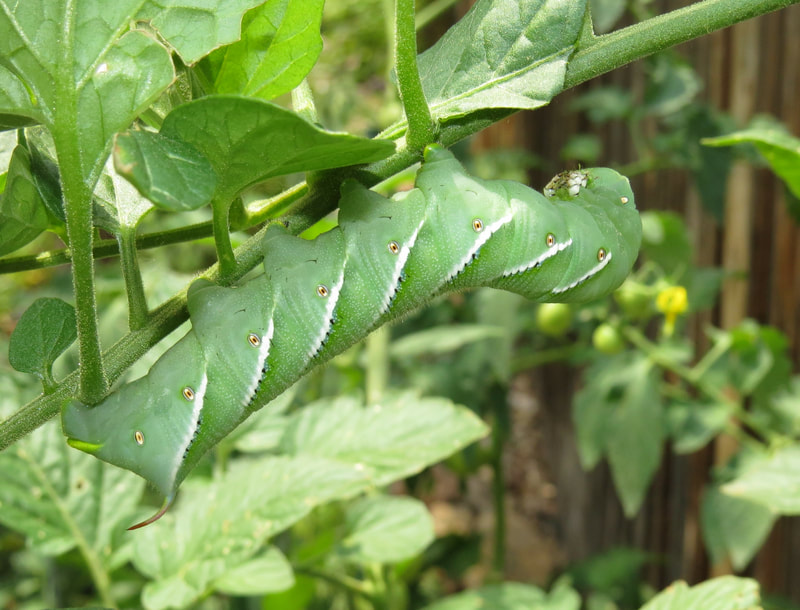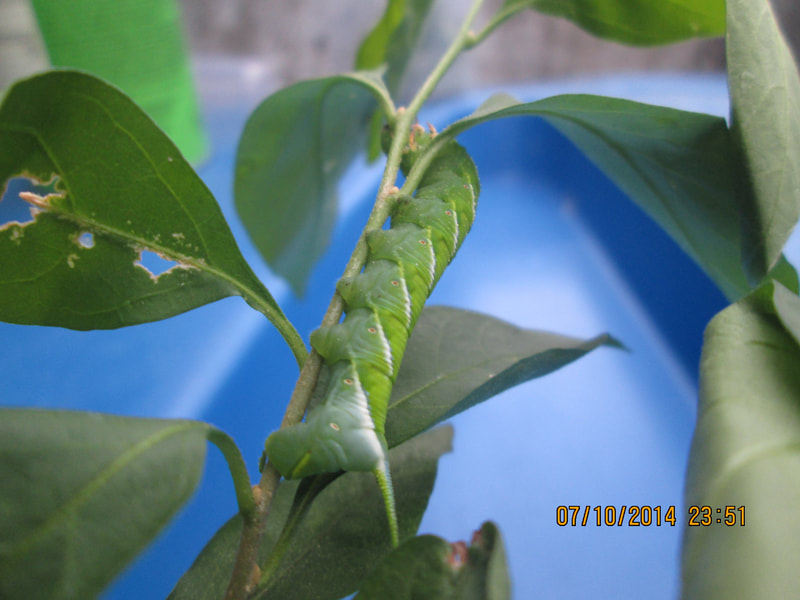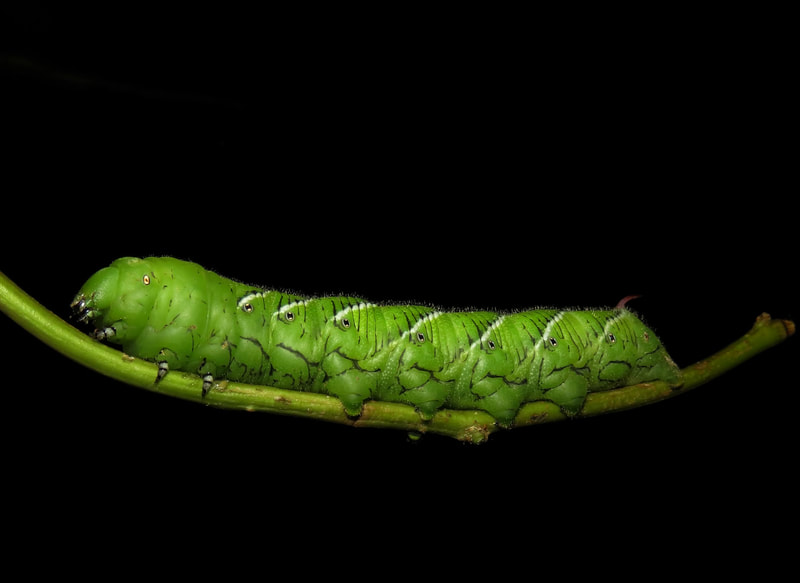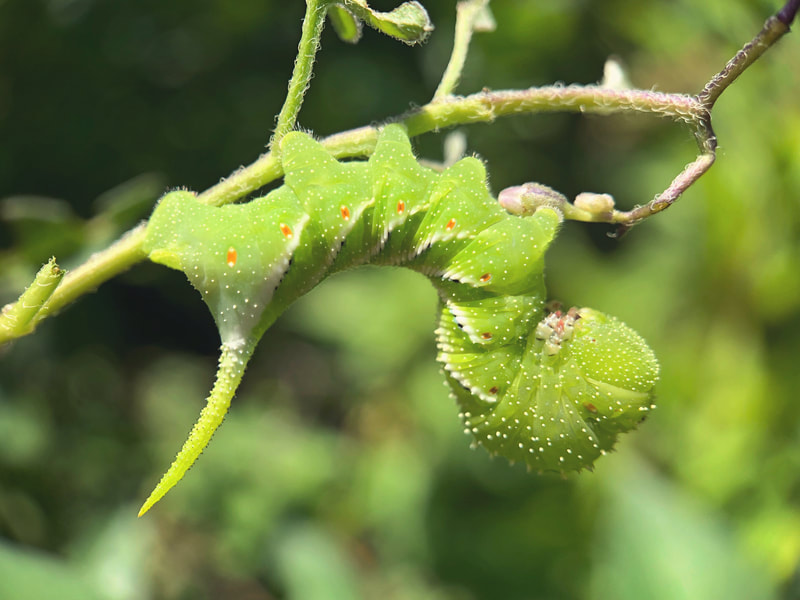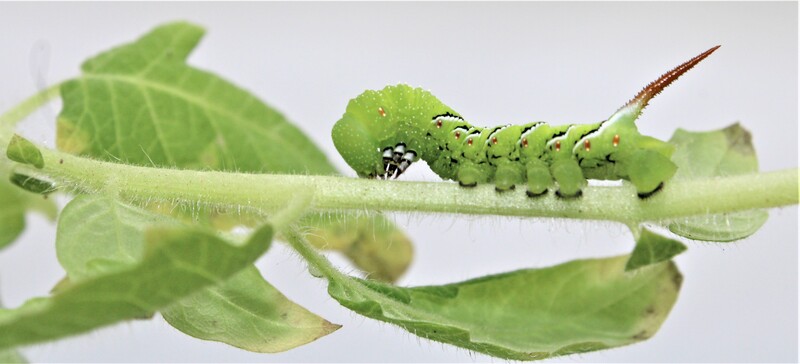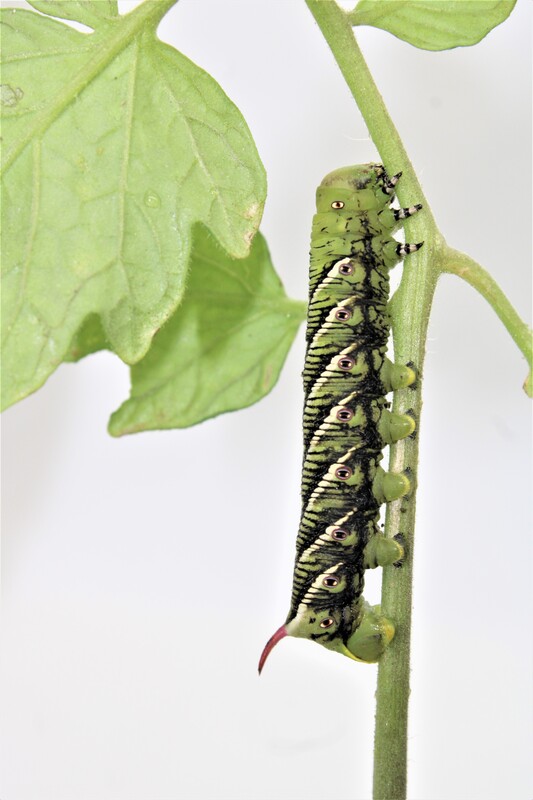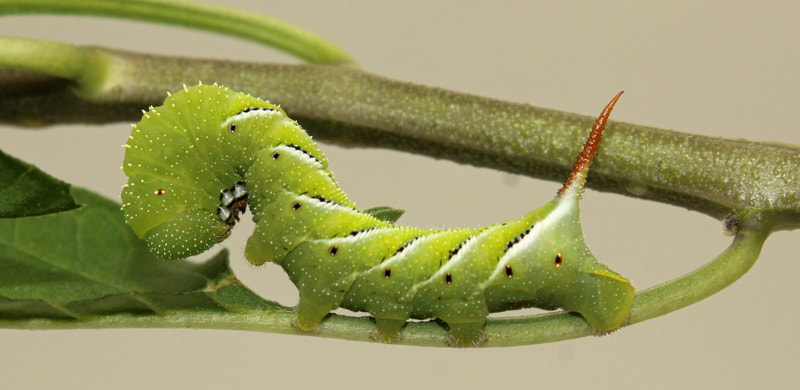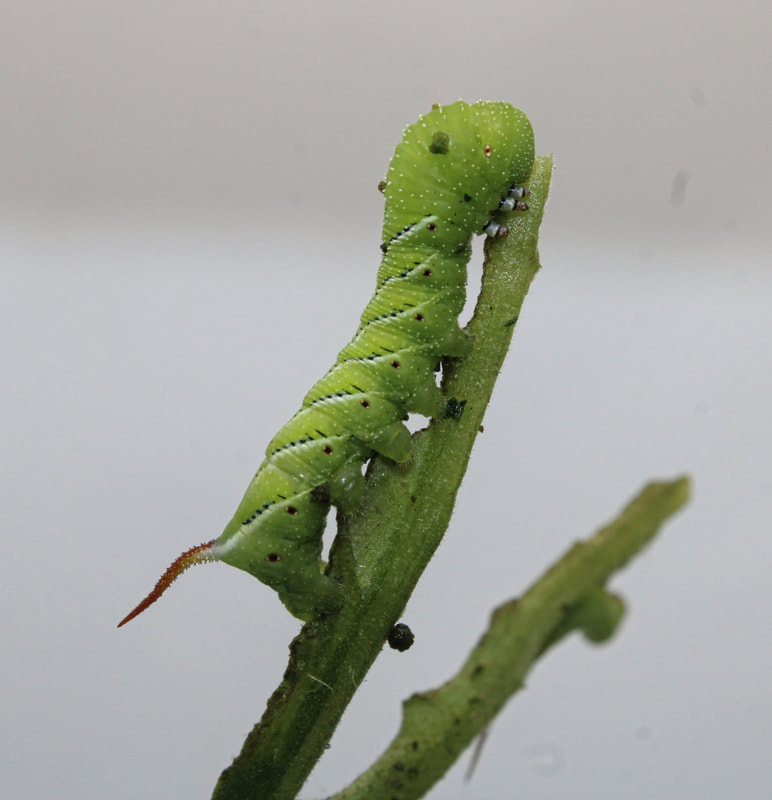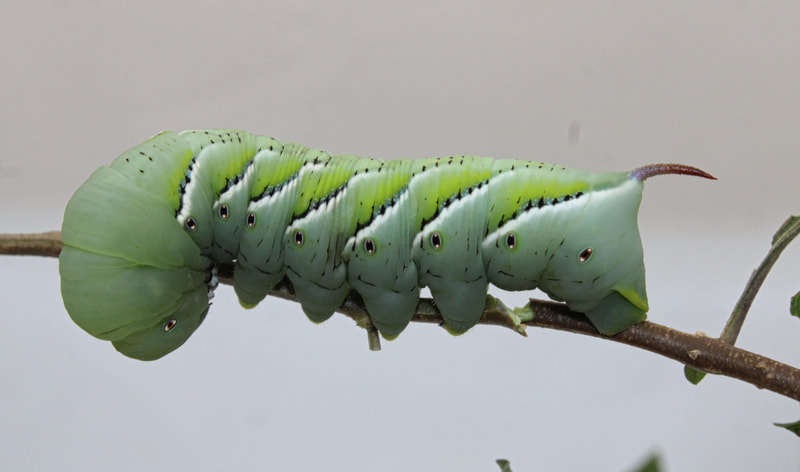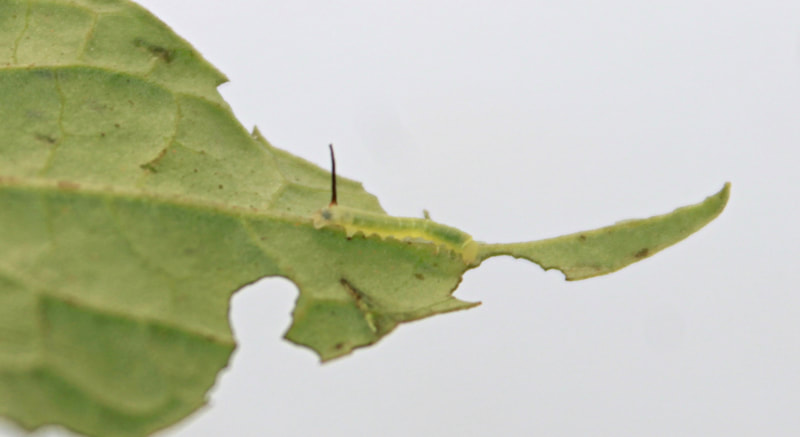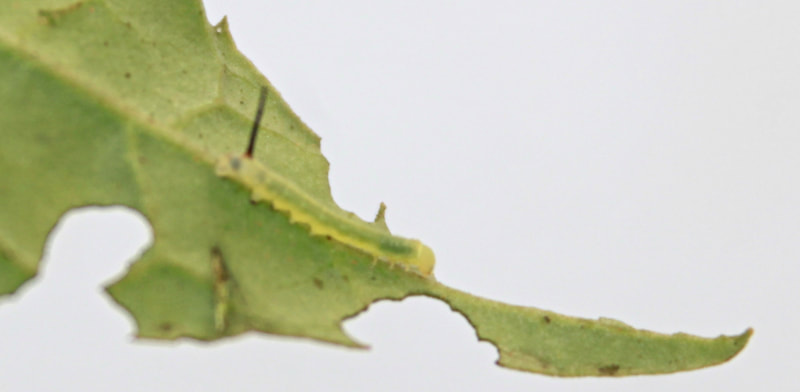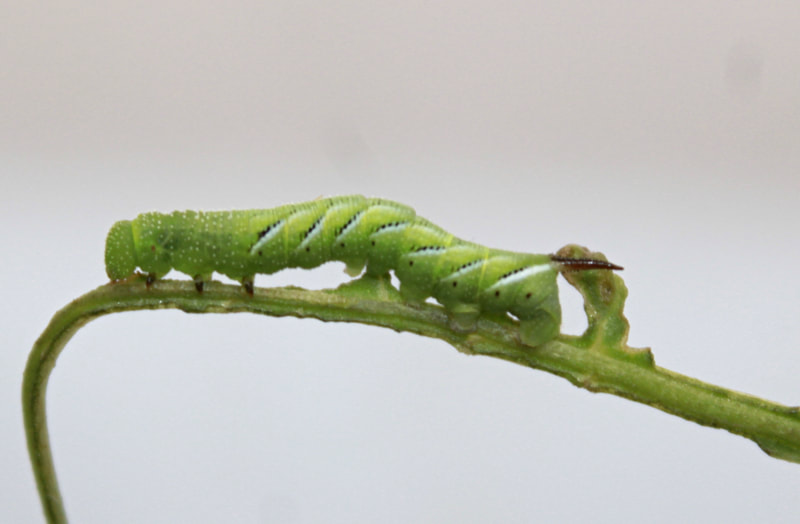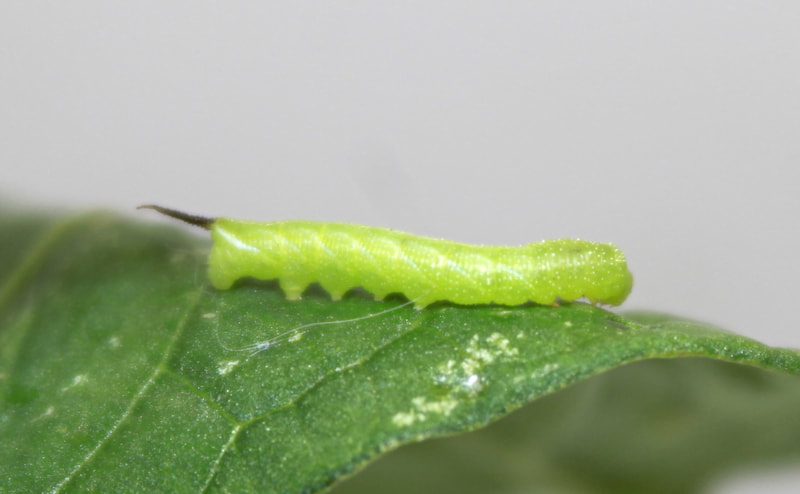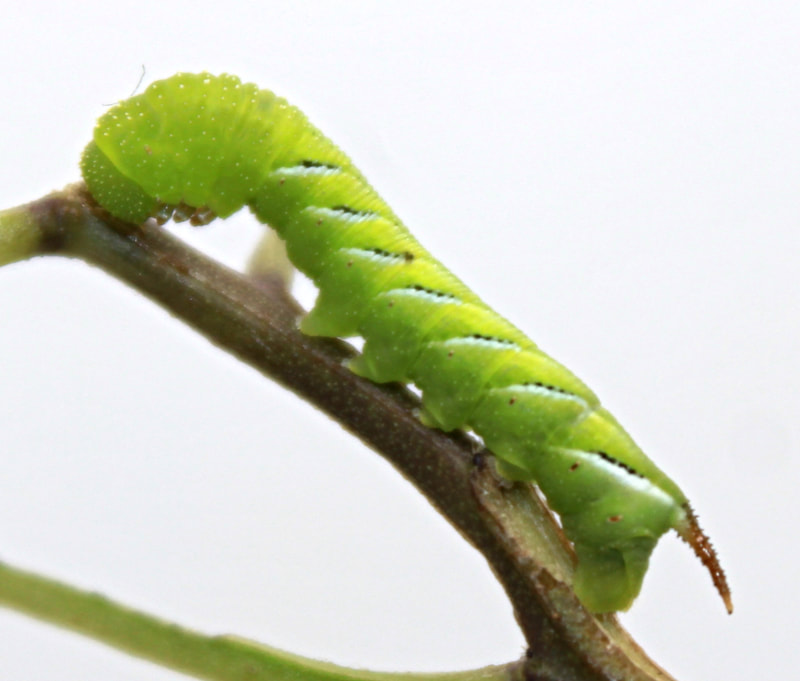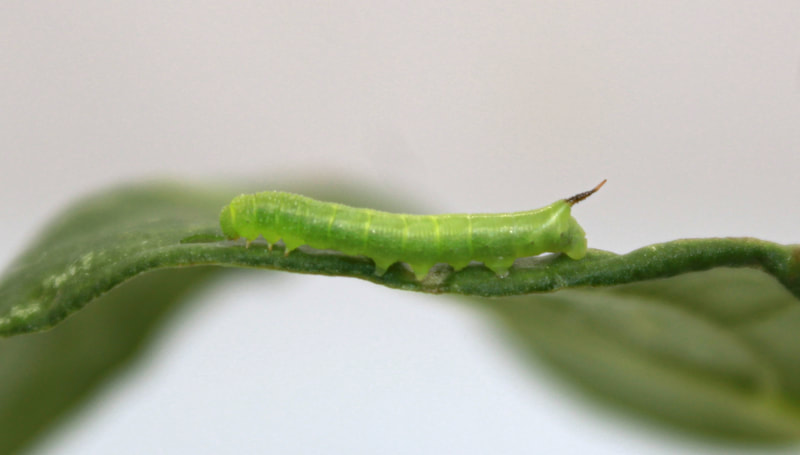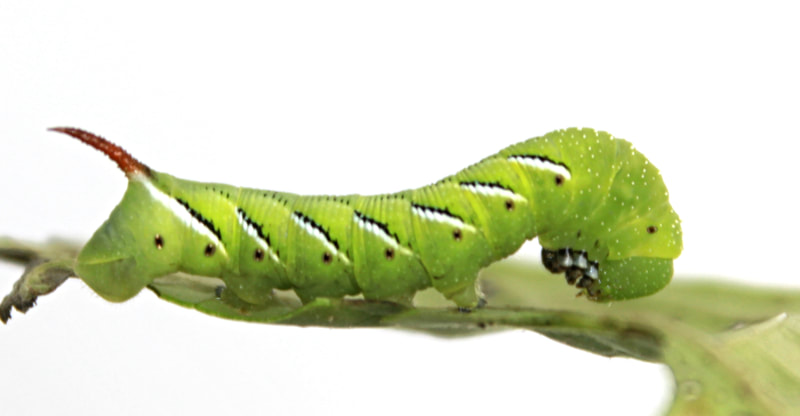|
Common Name(s): Carolina Sphinx,
Tobacco Hornworm, Tomato Hornworm*, Six-Spotted Hawkmoth *Tomato Hornworm is generally used for Manduca quinquemaculatus, however it is included here since most people use it when referring to this species. Ecology and Life History: Throughout most of its range, this moth can be found from May to October. In the Deep South, it can be found year-round and is often a pest on Tobacco farms. In the Southwest, this moth is linked to the monsoon season. This species is highly attracted to light, and can be quite common. Bait is an ineffective method for attracting this species. This species is not sexually dimorphic, and males and females have identical markings. Females tend to be slightly larger, and having a much more noticeably round abdomen. Eggs are laid on the leaves and stems of hostplant. In captivity, eggs will also be deposited on the sides of cages and nearby surfaces. Habitat and Searching for Larvae: This is a species of Solanaceous plants. They really enjoy Tomato, Pepper, Potato, Datura, and Nightshades. This species is almost never out of reach. Their preferred food are herbaceous plants, and as such, they’re never very tall. Larvae can be found virtually anywhere on the plant. First instars make distinctive small holes in the leaves and are found sitting under the leaf with the small hole. Older larvae tend to hide under leaves, or on the stems of plants. This species can turn up virtually anywhere from urban yards, parks, wetlands, marshes, edges, fields, and deserts. They are not often found in deep forests as their hostplants are not usually very numerous. In the Northern parts of its range, larvae can be found from July through October. They can be found nearly year-round in the South. UV flashlights are a great method to find this larvae as they fluoresce brightly in all instars. Rearing Notes: Adults are not very picky, and will lay eggs in paper bags, styrofoam coolers, or flight cages. Sleeving an adult on hostplant would also likely yield eggs. Placing adults into a flight cage with ample hostplant will provide many eggs. They do not need to feed to lay. This species enjoys most Solanaceous plants, and many are good candidates to rear this species on in captivity. Tomato is a favorite, but artificial diets are also available. These larvae consume a large amount of foliage. This species is usually not very susceptible to disease in captivity, but the introduction of a pathogen can prove fatal to an entire batch in short order. Rearing cages should be kept quite clean and clear of frass. In a lab setting, larvae reared in screen cages on living host did significantly better than their counterparts in tupperware. When rearing in tupperware, make sure there is adequate ventilation as this species does not like high humidity. Using an artificial diet is a great method for rearing, but be warned the diet produces a lot of humidity. Crowding is not a problem for this species and many larvae can be reared together. In tupperware containers, it is best to keep the amount of larvae to between 10-15 as too many will produce a lot of excess humidity. Sleeving is a great way to rear large amounts of this species. Pupation is achieved easily using the paper towel method (outlined on the general information tab of this website), or by providing the larvae with a loose soil medium to bury in. Host plants: Click here to load this Caspio Cloud Database
Cloud Database by Caspio |
Adult description:
This is a fairly large (51-56mm forewing (2)) moth. It can be commonly confused with Manduca quinquemaculatus, and they occur over much of the same range. The ground color of M. sexta is brown, with a thin white band on the outer forewing margin. This line is quite jagged in appearance. There is usually a white discal spot. The body of this moth often has 6 paired yellow dots, however this is not a consistent feature. The hindwings of this moth are black with two mostly straight, thick whitish bands. The bands may have smaller black lines running through them, but are always edged with black. Larval description: L1: Upon hatching, the small larvae have a very large black horn. The horn is almost twice the body length. L4: Around this stage, the caterpillars starts to look noticeably different. It is green, rather granulose, and 7 lateral white stripes. These stripes are often bordered in a green/blue color, and are located near the spiracles. The last line continues to the base of the red horn. L5: The final instar looks very similar to a larger L4. The coloration remains the same, although sometimes a darker form of the larvae can be found. In the darker form, more black lines seem to cover the larva. The darker areas give the larva a much more contrasted appearance. The lateral lines seem to become slightly thinner in appearance as the larva grows. Before pupation, the entire larva usually develops a pink cast. |
The gallery to the left contains photos of Manduca sexta adults. If you have a photo that you would like to submit to us, please contact us.
The gallery to the right contains photos of Manduca sexta larval and pupal stages. If you have a photo that you would like to submit to us, please contact us.
The gallery to the right contains photos of Manduca sexta larval and pupal stages. If you have a photo that you would like to submit to us, please contact us.
|
|
|
